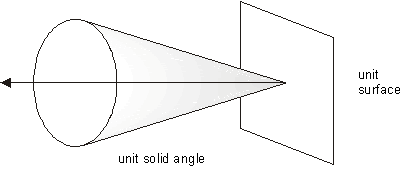| |
|
The luminosity function expresses perceived amount of light with a wavelength λ and power of one watt. For daylight perception, i.e. photopic vision, this function has its maximum of 680lm/W for 555nm (green light) decays to zero towards the ends of the wavelength interval corresponding to visible light. Luminous flux coming from an unit emitting surface (square meter) into an unit solid angle (steradian) is called luminance (unit: nit [nt] = cd/m2).  Photometry is the science that considers light measurements using models of the standard observer. Psychophysiological description of lightSubjective sensation of light is perceived by a human being in a very complicated way that depends also on previous light stimuli, background radiation, etc. These sensations are of psychophysiological nature and cannot be measured using instruments as physical and psychophysical are measured. The most common term that describes psychophysiological visual sensations is brightness that is approximately proportional to logarithm of luminance, according to Weber law.
|